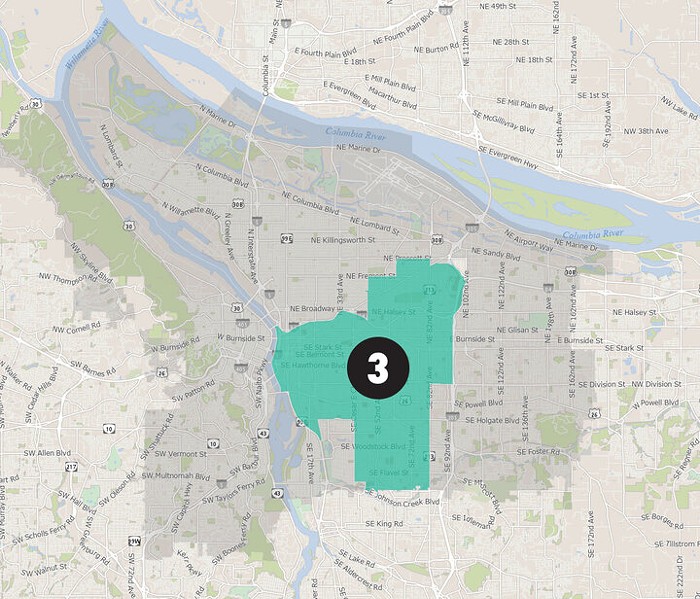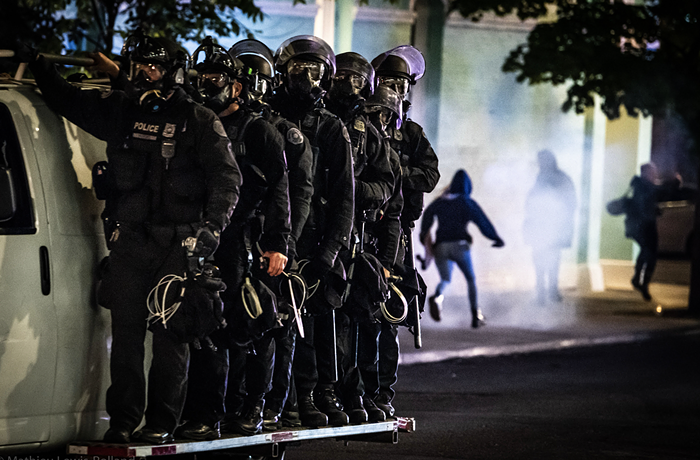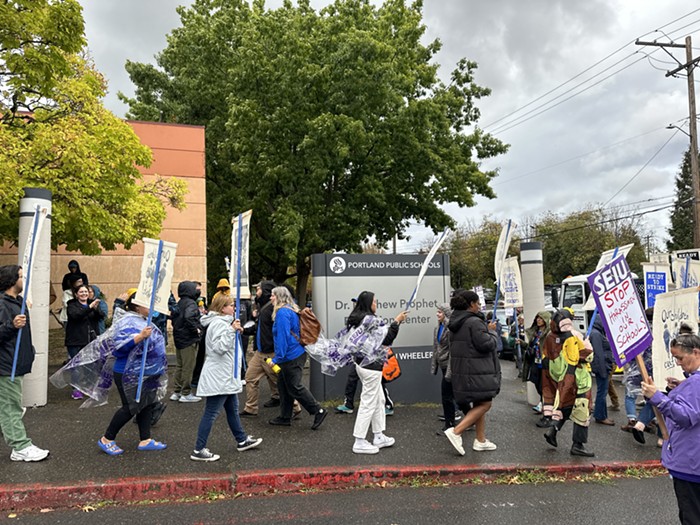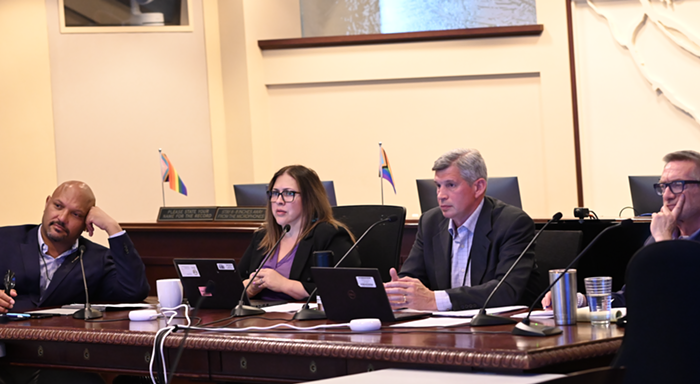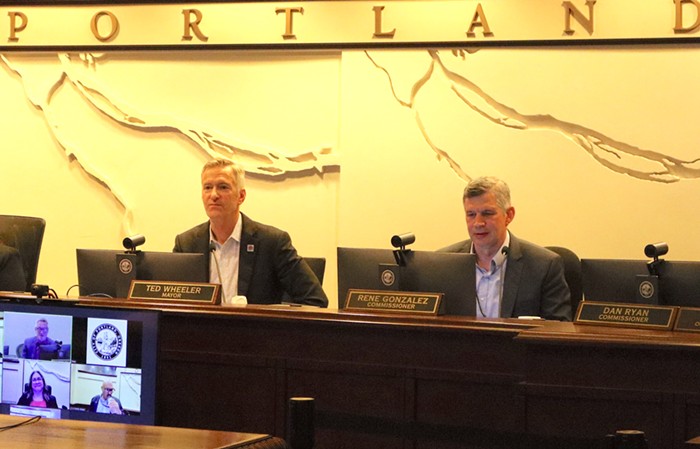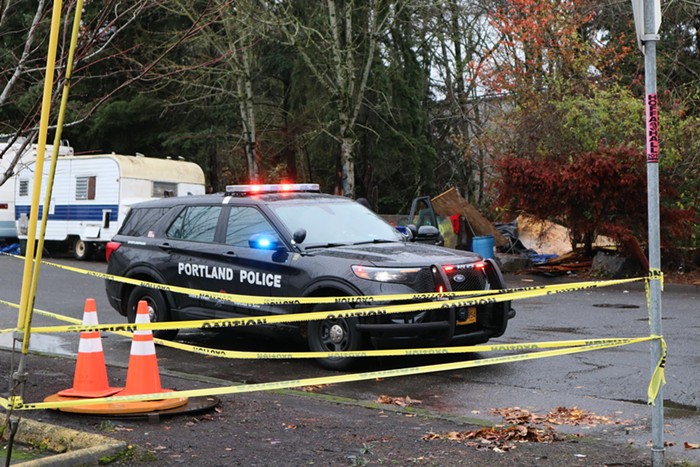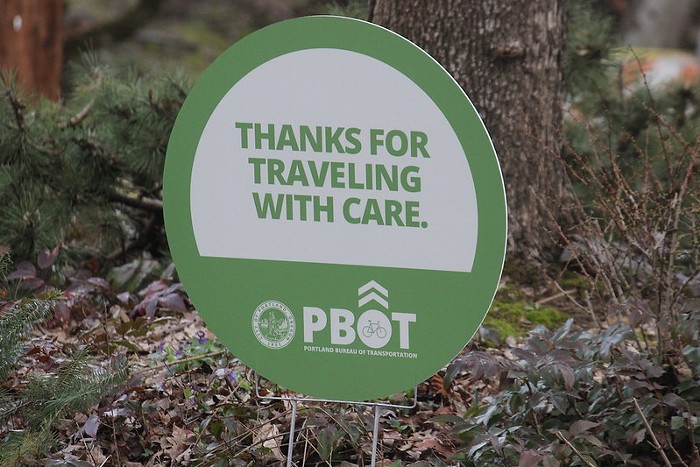
Most of the 54 Multnomah County residents who died from overheating during June’s record-breaking heatwave lived alone without access to air conditioning, according to a report released Tuesday by the county health department. The report adds a new level of detail to much of what the public was already told about the fatalities, while county officials continue work on a more in-depth investigation into the deaths and what agencies could have done to avoid them.
Portland broke high temperature records for three consecutive days during the heatwave, ultimately peaking at 116 degrees on June 28.
As of July 9, the Multnomah County Medical Examiner’s Office identified 71 suspected hyperthermia—or excessive heat—deaths. Of those deaths, 54 have been formally ruled hyperthermia deaths. The report analyzes the confirmed cases, but the findings are considered preliminary because additional investigation is currently underway. The county will publish a final report when the full investigation is complete.
The majority of deaths occurred in the victim's own residence, more than half of which were multifamily dwellings, like apartment buildings. Of the people who died in multifamily dwellings, 45 percent lived on the third floor or higher.
Two people who died were homeless, and both were found in their cars. The number of homeless deaths may increase as the investigation progresses, according to the county.
Of the people who died in their homes, 78 percent lived alone. At least four people died in apartment buildings charged with caring for vulnerable people, Home Forward and Central City Concern. Two people died in an unnamed independent senior living facility—those deaths have been reported to the Department of Housing Services for further investigation.
A majority of the deaths were recorded on June 29, 72 hours after the extreme heat started. According to Multnomah County Health Officer Jennifer Vines, the body’s natural cooling systems start to experience stress after 48 hours, so the pattern of death is similar. Most victim’s deaths were recorded at the time they were discovered.

The report states the region’s heatwave was “so extreme that it was difficult to describe just how unusual it was.”
During a press conference Tuesday, Multnomah County Chair Deborah Kafoury said the heat crisis “arrived decades ahead of our best predictions of when this kind of climate disruption would first appear.”
The US Centers for Disease Control and Prevention (CDC) predicts that, in about 50 years, Multnomah County will experience 38 days over 90 degree temperatures per year. The current record, set in 2015, is 29 days.
In preparation for this heat wave, the county opened three 24-hour cooling centers, nine library branches, and mobilized 60 outreach teams that visited vulnerable populations, like homeless camps, and provided water and other cooling supplies. The county also called and texted thousands of seniors, people with disabilities, and pregnant and nursing people in an effort to communicate resources directly to vulnerable populations.
According to Kafoury, the county used all of its previous weather-emergency experiences to prepare the best it could.
“That’s why when the death reports came in, we were devastated,” Kafoury said.
Over the next couple weeks, local health, emergency planning, transportation, and communications officials will meet to discuss what actions were taken to prepare for the heatwave and how the people who died could have been better cared for. The county’s Office of Emergency Management will use those discussions to develop an After Action Report—a report that details what worked well, what didn’t work, and what needs to change in order to improve the region’s future responses to events like heat waves.
There will be two phases of After Action Reports, according to Emergency Management Director Chris Voss. The first report will be published within 30 days and include recommendations and solutions that can be enacted in the short term. Those solutions will address issues with cooling center locations, the county’s informational hotline which failed to answer over 100 calls during the heatwave, and scarce transportation to cooling centers that left some people waiting over 90 minutes for taxis.
The urgency of the first report is needed to prepare for possible heat events later this summer, as well as wildfire season, according to Voss.
The second report will be published by the end of the year and include long-term solutions. Voss did not provide specific examples of long-term solutions, but the county report points at a need to address carbon emissions, which contribute to climate change, and infrastructure issues like heat islands—patches of concrete like parking lots that absorb and retain heat. Most of Portland’s heat islands exist in the eastern part of the city, which also saw a higher proportion of heat-related deaths during the heatwave.
In a state-led press conference Monday, leaders from the Oregon Office of Emergency Management (OEM) noted another issue that will require a long-term solution: identifying who needs help.
According to OEM director Andrew Phelps, when there is a major flood, it’s obvious which homes need emergency assistance—the ones that are partially underwater. The same concept goes for wildfires or power grid failures during ice storms. The situation is less obvious during a heatwave, since there is no clear map of which homes have adequate cooling systems and which don’t.
“When you have a heat event like this impacting millions of folks, it’s much more difficult to focus on specific door-to-door type outreach like we experience for fires, floods, or an ice storm,” Phelps said Monday. “That’s what I think makes a response like this so complex.”
Lack of air conditioning was a main factor in heat wave deaths, according to the county’s report. Of the 54 confirmed hyperthermia deaths, none of the victims had central air and only eight people had a portable air conditioning unit in their home. Of those eight people, seven of them either did not plug in their units or the units were not working properly.

More than half of the people who died only had a fan to address the heat, which, according to the report, may have only made their situation worse. When temperatures reach above 90 degrees, fans only move hot air around and don’t cool bodies down.
The county’s report identified Lyle Crawford as one of those people who only had access to a box fan and died in his home during the heatwave. Crawford, 62, couldn’t afford an air conditioner and did not have a computer or smartphone, according to his sister. County officials are unable to confirm if the people who died, like Crawford, were among the people who the county called or texted to warn about the heatwave.
“I’m sure it didn’t occur to him that he was going to die,” said his sister, Donna Crawford, who is quoted in the report. “He would have answered the door if someone knocked, and that might have done it. An actual human being. But how can there be enough human beings to go to the door of every older person?”
Another heatwave victim, Jollene “Jolly” Brown, was found in her apartment by her son, Shane—they had just talked about replacing her broken air conditioner the night before, but Brown, 67, had said it was too expensive. Brown’s home was 99.5 degrees inside when Shane found her body. Shane said that Brown had an offer to stay at a friend’s place during the worst of the heat, but she declined because she didn’t want to impose.
Brown, who loved opals, Dolly Parton, and watching “American Idol,” struggled with her health and surviving off a meager income, but, according to Shane, never focused on her troubles.
“She had this optimism that things would work out,” Shane said in the report.
The report stressed the heatwave’s direct link to climate change, noting the impacts of the climate crisis are happening much faster than officials had originally anticipated.
“I think we’ve learned a really hard lesson,” said Multnomah County Health Officer Vines, “and I’m sorry we’re going to be using this event in the future to help convey the risks that heat poses.”

